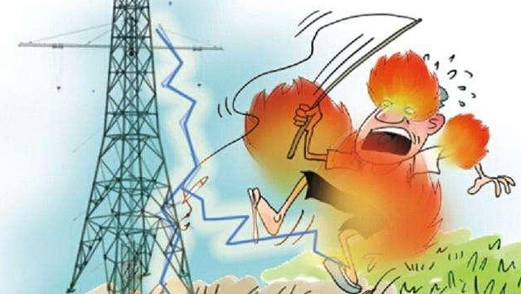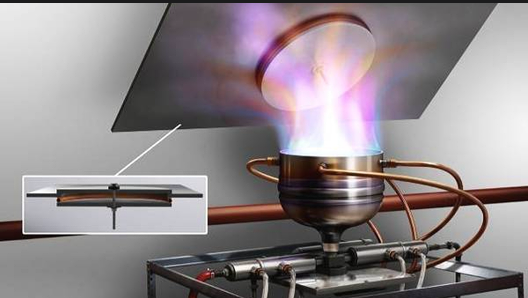Introduction to Over Voltage Protection

Over voltage protection is a crucial aspect of modern electrical systems, designed to safeguard both residential and industrial environments from the detrimental effects of excessive voltage levels. Over voltage, defined as any voltage exceeding the normal operating voltage of electrical equipment, can occur due to various conditions such as sudden spikes from lightning strikes, power surges, or faults in the power distribution network. These conditions can pose significant risks, leading to potential damage or failure of electrical devices and systems.
The fundamental principle of over voltage protection revolves around the idea of preventing these unwanted voltage spikes from reaching sensitive equipment. By implementing protection mechanisms, it is possible to maintain the integrity and longevity of electrical systems, thus ensuring uninterrupted operation and safety. This is particularly important in settings where consistent power quality is essential, such as in data centers, manufacturing plants, and households with sensitive electronics.
The importance of over voltage protection cannot be overstated. In residential settings, it protects everyday appliances and electronics from damage that could lead to costly repairs or replacements. In industrial environments, over voltage protection is vital for maintaining the continuous operation of machinery and preventing downtime, which could result in substantial financial losses. Additionally, safeguarding electrical systems contributes to overall safety by reducing the risk of electrical fires and other hazards associated with voltage irregularities.
Overall, understanding and implementing over voltage protection is a key component of electrical system design and maintenance. It ensures that systems operate within their intended voltage ranges, thereby enhancing reliability and safety. As we delve further into the specifics of over voltage protection, it becomes clear how these protective measures are integral to both residential and industrial electrical infrastructure.“`html
Types of Over Voltage Protection Devices
Over voltage protection devices play a crucial role in safeguarding electrical systems from the detrimental effects of voltage spikes. Among the most commonly used devices are surge protectors, voltage regulators, and transient voltage suppression (TVS) diodes. Each of these devices serves a unique purpose, offering distinct advantages and limitations, making them suitable for various applications.
Surge Protectors: Surge protectors are designed to shield electrical devices from sudden and severe voltage spikes, often caused by lightning strikes or power outages. They work by diverting excessive voltage away from the protected equipment to the ground. Surge protectors are widely used in residential and commercial settings, providing an essential layer of protection for sensitive electronics such as computers, televisions, and home appliances. However, their effectiveness diminishes over time, and they must be replaced periodically to ensure continued protection.
Voltage Regulators: Voltage regulators maintain a stable output voltage despite fluctuations in the input voltage. They are particularly useful in environments with inconsistent power supply, such as industrial settings or areas with unstable electrical grids. By providing a constant voltage, regulators protect equipment from both over voltage and under voltage conditions. Voltage regulators are commonly used in applications requiring precise voltage control, such as laboratory instruments and telecommunications equipment. While highly effective, they can be more expensive and complex to install compared to other protection devices.
Transient Voltage Suppression (TVS) Diodes: TVS diodes are semiconductor devices that protect circuits from transient voltage spikes. They operate by clamping the voltage to a safe level, thereby preventing damage to sensitive components. TVS diodes are fast-acting and can handle high-energy transients, making them ideal for protecting electronic circuits in automotive, aerospace, and consumer electronics applications. One limitation is their relatively low power dissipation capacity, which makes them unsuitable for handling large surges.
In real-world scenarios, the choice of over voltage protection device depends on the specific requirements of the application. For instance, surge protectors are apt for household electronics, voltage regulators are indispensable in industrial settings, and TVS diodes are crucial in safeguarding delicate electronic circuits. Understanding the different types and their applications ensures that the most effective protection is employed, enhancing the longevity and reliability of electrical systems.
Benefits of Implementing Over Voltage Protection
Incorporating over voltage protection into electrical systems offers numerous benefits that extend well beyond the immediate safeguarding of appliances and infrastructure. First and foremost, over voltage protection acts as a shield against potential damage caused by voltage spikes. Electrical components and appliances are particularly susceptible to such spikes, which can lead to premature failure or complete destruction. By preventing these occurrences, over voltage protection effectively extends the lifespan of these components, thereby reducing the frequency and cost of replacements and maintenance.
The safety advantages of over voltage protection cannot be overstated. Electrical fires are a significant hazard in both residential and commercial settings, often triggered by excessive voltage. Over voltage protection mitigates this risk by ensuring that voltage levels remain within safe limits, thereby preventing overheating and potential ignition. This not only safeguards property but also protects lives, making over voltage protection an indispensable part of any comprehensive safety strategy.
From an economic perspective, the benefits of implementing over voltage protection are substantial. By minimizing the risk of equipment failure, businesses and homeowners can avoid the high costs associated with repairs and replacements. Furthermore, over voltage protection contributes to minimizing downtime, ensuring that electrical systems remain operational and reliable. This is particularly critical in industrial and commercial environments where operational continuity is directly linked to productivity and profitability.
Efficiency is another key advantage offered by over voltage protection. By maintaining stable voltage levels, electrical systems can operate more efficiently, reducing energy waste and improving overall performance. This leads to cost savings on energy bills and a lower environmental footprint, aligning with sustainable and eco-friendly practices.
Overall, the integration of over voltage protection in electrical systems not only enhances safety and reliability but also offers significant economic benefits. The reduction in maintenance costs, prevention of electrical fires, and improvement in operational efficiency collectively contribute to a robust and resilient electrical infrastructure.

Best Practices for Over Voltage Protection
Implementing over voltage protection effectively requires a strategic approach tailored to the specific needs and conditions of each environment. The following best practices aim to guide you through the process of selecting, installing, maintaining, and monitoring over voltage protection devices.
Firstly, it is crucial to choose the right over voltage protection device based on your unique requirements. Factors such as the type of electrical systems in use, the voltage levels, and the sensitivity of your equipment should influence your decision. For instance, sensitive electronic devices may benefit from precise surge protection devices, while industrial settings might require more robust solutions like voltage regulators or uninterruptible power supplies (UPS).
Proper installation is key to ensuring the effectiveness of over voltage protection. Adhere to manufacturer guidelines and industry standards during installation. Ensure that all connections are secure and that the protective devices are correctly grounded. It’s also advisable to integrate protective devices as close to the equipment they are safeguarding as possible, minimizing the potential for voltage spikes to travel through extensive wiring.
Regular maintenance is another cornerstone of sustained over voltage protection. Conduct periodic inspections to identify any signs of wear or damage to the protective devices and their connections. Replacing components that show signs of degradation helps maintain the system’s integrity and effectiveness. Additionally, keeping a log of maintenance activities can be invaluable for future troubleshooting and ensuring compliance with safety standards.
Monitoring and testing over voltage protection systems are essential practices to confirm their ongoing functionality. Utilize diagnostic tools and systems that can alert you to potential issues before they escalate. Routine testing, including simulation of over voltage conditions, can help verify that your protective measures are operating as intended. Case studies have shown that organizations employing regular testing protocols experience significantly fewer instances of equipment damage due to voltage spikes.
For example, a manufacturing facility implemented a comprehensive over voltage protection plan that included surge protectors, regular maintenance schedules, and continuous monitoring. This proactive approach resulted in a noticeable reduction in equipment downtime and repair costs, illustrating the tangible benefits of adhering to best practices in over voltage protection.